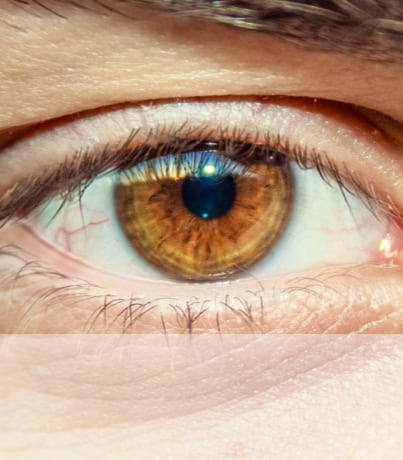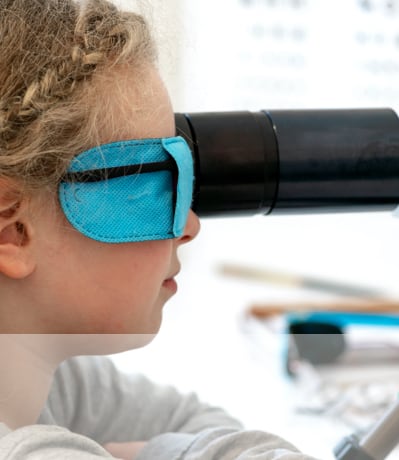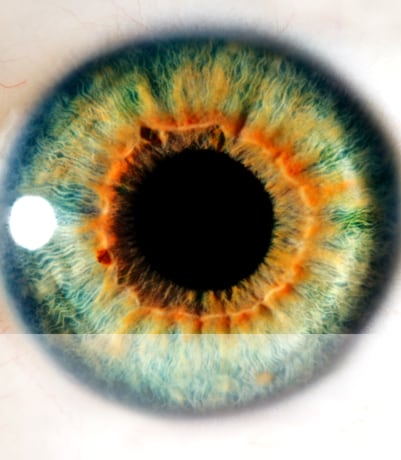Contact lenses can be a great option if you don’t want to wear glasses. You may have heard that dry eye can prevent you from wearing contacts, so it’s reasonable to wonder if another eye disease like glaucoma could pose the same difficulties.
Fortunately, you can often wear contact lenses with glaucoma.
Glaucoma isn’t a single disease, though. It’s a group of eye diseases primarily stemming from the same root cause: damage to the optic nerve. And there may be certain circumstances where contact lens wear may not be possible with glaucoma.
What Is Glaucoma?
Glaucoma is a common eye disease that can result in vision loss due to damage to the optic nerve. It’s the second-leading cause of blindness in the United States and has no cure. There’s also no conclusive evidence that gives us the cause of glaucoma. The disease is often related to increased fluid pressure in the eye, but this isn’t always the case.
It’s also important to note that high eye pressure doesn’t guarantee that you’ll develop glaucoma, but it can be a risk factor.
Types of Glaucoma
The 2 most common types of glaucoma are open-angle and angle-closure. But there are several other types of glaucoma that are variations of these primary 2 types.
Open-Angle Glaucoma
Open-angle glaucoma affects around 3 million Americans. It can develop over many years as the drainage canals in the eye become blocked. The eye’s pressure increases when the fluid cannot drain properly anymore.
Although a person may not notice any symptoms of open-angle glaucoma, it typically responds well to treatment to slow or stop its progression if diagnosed early enough.
Angle-Closure Glaucoma
Angle-closure glaucoma is less common than open-angle but is much more dangerous. This form of glaucoma typically develops and worsens quickly instead of happening gradually over time. So, vision loss can occur much more rapidly.
Angle-closure glaucoma is often caused when an iris is improperly sized or shaped. It bunches up over the drainage canals in the eye, which can cause a rapid increase in pressure. This can happen when your pupil enlarges too quickly or too much.
Symptoms of Glaucoma
The specific symptoms may vary slightly depending on the type of glaucoma. For example, the more common open-angle glaucoma typically develops slowly over many years and has few symptoms. You may not even notice the vision loss that happens because it’s so gradual.
This is a significant reason why receiving regular comprehensive eye exams is so important so the disease is diagnosed earlier. Then your eye doctor can prescribe treatments to slow its progression and prevent or minimize vision loss.
On the other hand, the more dangerous but less common angle-closure glaucoma usually develops much quicker. Symptoms of this form of glaucoma may include:
- Severe discomfort in your forehead or the affected eye
- Redness in the eye
- Low or blurry vision
- Seeing rainbows or halos in your vision
- Upset stomach or throwing up
- Headaches
Treating Glaucoma
For open-angle glaucoma, the primary goal in treatment is typically to lower the eye’s pressure. Prescription eye drops are the most common thing the eye doctor will prescribe. There are other medications that they can prescribe if eye drops don’t achieve the desired results.
More aggressive treatment is typically needed for angle-closure glaucoma. Laser or conventional surgery are 2 common treatments. Your eye doctor can determine which procedure may work best for you.
A common laser surgery procedure is trabeculoplasty. During this procedure, the eye surgeon uses a laser to create a better drainage angle to reduce eye pressure. And a trabeculectomy is a conventional surgery that creates a pocket-like bubble in the eye’s outer surface.
Wearing Contacts with Glaucoma
Contact lens wear is not a problem in most cases of glaucoma. You should see your eye doctor regularly once you have a glaucoma diagnosis so that they can monitor your eye health.
One potential issue with contact lenses and glaucoma is if you have had a trabeculectomy. The pocket the eye surgeon creates isn’t typically noticeable because it’s often hidden under your upper eyelid, but it can cause issues with fitting contacts and wearing them comfortably.
Discuss Your Eye Health with Your Eye Doctor
An important thing to remember about glaucoma is that it can often develop with little to no symptoms. And the vision loss that it causes cannot be recovered, so it’s important to follow the American Optometric Association’s and your eye doctor’s guidelines for when you should get a comprehensive eye exam. This is every 1 to 2 years for most people.
Call us at Bettner Vision if you’re due for an exam or experiencing any concerning symptoms. Our team can get you in to see one of our experienced eye doctors for an exam.








